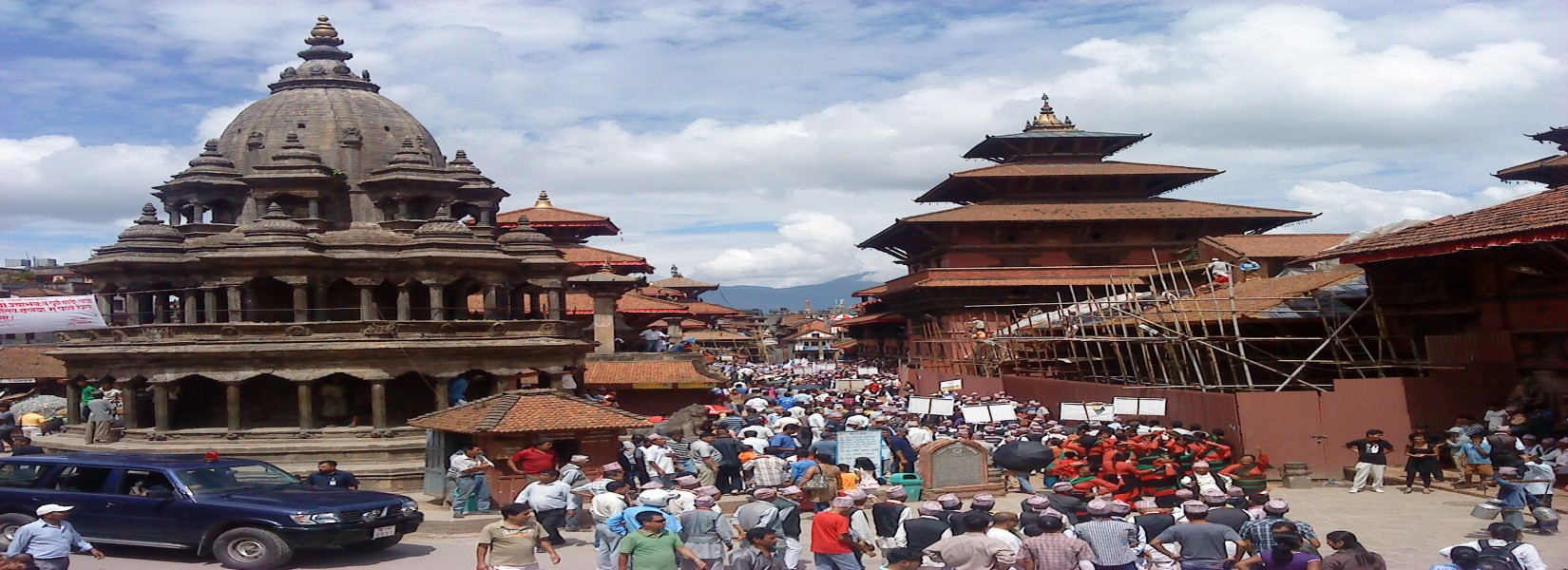About Patan and Lalitpur Tour
Patan- Lalitpur Cultural and Heritage Tour a delightful and exciting tour of few hours to a day depending upon your interest and duration, where one can enjoy our wonderful sightseeing tour before your main adventure journey or trekking or in the end.
Patan popularly known as Lalitpur which means a city of great arts and crafts which you can observe deeply on this fabulous tour, a sub-metropolitan city just south of Kathmandu main city air separated by Baghmati River which is 20-30 minutes drive from the main city area of Thamel.
In early times before 17th Centaury stood as an individual kingdom ruled by Malla monarch dynasty from 6-17th centauries till it was annexed as a separate district within Kathmandu Valley and Nepal.
The main indigenous people are Newar tribes interwoven with both Hindu and Buddhist religions, which you will witness on this wonderful Patan-Lalitpur Cultural and Heritage Tour
Day 01: Tour of Patan Durbar Square with four Emperor Asoka built Buddhist Stupa.
Morning after a hearty breakfast our city and tour guide will meet you at hotel lobby by 8:30 a.m or 9 a.m. for short drive to reach southern side of Kathmandu city and the valley to enter into Patan or Lalitpur.
Short drive takes you across the Baghmati bridges to reach into Patan area within its busy market place of Mangal Bazaar where the famous Durbar Square located.
Patan Durbar Square:
For Half-Day or Day Tour from 9 a.m.to 01 p.m. (on Half day) extends to 4-5 p.m. on a Full Day tour in the comfort of car-coach as per groups size can combine this half day tour of Patan with Bhaktapur city also.
Patan Durbar Square (Approx: 01- 02 hrs)
Places of interest around Patan / Lalitpur city:
Patan Durbar Square:
The hub and main center of Patan / Lalitpur treasures ancient Newari architecture with three main courtyards within palace:
Mul chowk, Sundari chowk, Keshav Narayan Chowk with Mul chowk oldest the centre of Patan square, several multi sized and a multi-styled temple houses the western part of the complex. Main among these is Krishna Temple, Bhimsen Temple and the Golden Temple of Hiranya.
Mul Chowk (royal court yard):
Famous and largest courtyards among three main Chowk (Square), the Bidya Temple is located at the center of the courtyard and the Taleju temples stand around the courtyard.
Sundari Chowk:
Sundari Chowk is to the south of the Mul Chowk with a sunken tank known as Tusha Hiti Mul Chowk & Taleju Temple.
Keshav Narayan Chowk:
Keshav Narayan Chowk on the northern part with Degutale temple, it is the site of the earliest Malla palace in Patan, the Chowk sits on the older foundations of a Buddhist monastery.
Krishna Temple:
This temple dedicated to Hindu Lord Krishna was erected in the 17th century, considered to be the first one to be built in Shikara architecture, it commands a vital position around durbar square. The elegant shikhara-style temple is ranked as one of the gems of Durbar Square. The temple is compared with sacred Mount Meru, which is abode of the god Shiva according to Hindu scriptures.
Mahaboudha:
A Buddhist temple of Mahaboudha, which is made of clay bricks, lies to the east of the Durbar Square. Hundreds of Buddha images are engraved in the bricks. The temple is known for its fine terra cotta work.
Kumbheshwor:
Just at rim of Drubar square lies five-storied pagoda temple of Lord Siva built by King Jayasthiti Malla, inside the temple premises a natural spring, its source the belief is from the famous glacial lake of Gosainkunda around Langtang Himal of Rasuwa district .
The golden work on the temple was added later in 1422 A.D.
On the festival of Janai Purnima (month of August), ritual bathing and fair takes place.
Jagat Narayan Temple:
Jagatnarayan temple a tall Shikara style temple devoted to Lord Vishnu, red bricks are used for the construction. The temple also holds a fine metal statue of Garuda, Ganesh and Hanuman, all related to Hindu religion and mythology.
Rudra Varna Mahavihar:
This Buddhist monastery holds amazing collection of images and idols in metal, stone and wood. Legend holds that the Kings in the ancient times were crowned in this monastery. Many of the treasures offered by the people can be seen here even today.
The Asoka Stupas:
The Indian Emperor Asoka visited Nepal in 250 B.C and constructed four ancient stupas around four corners of Patan. The four stupas are located in Pulchowk, Lagankhel, Imatole and in Teta (way to Sano Gaon) respectively.
Patan Industrial Estate:
Located outside the city suburb near the Stupa at Lagankhel, an interesting place to visit and shopping for souvenirs, where all the handicrafts are hand made from metal, wood to stone art work includes carpet, Peshmina shawl are woven here, as Patan / Lalitpur is city of beauty and arts, it will be an opportunity to observe the work and skill of craftsman and to purchase some items from this place.
Tour to extend for full day:
Tibetan Refugee Camp:
Tibetan Refugee camp located on the south of Patan area near the only Nepal Zoo, where one can observe the happy-cheerful workers weaving carpets.
This place was established in the early 1970's after the Chinese invasion in Tibet where a great number of Tibetan migrated here, and the Nepal Government established this place as a permanent camp or settlement for the Tibetan Refugees here you can shop souvenirs as well.
Bungmati and Kokana villages:
A short drive to Bungmati and Kokana villages located on the very edge of Kathmandu valley around Lalitpur district, where the way of life villagers still Exists at is was for many past centuries, and old Newari village with some Tamang and other tribe as minority, here visit the local old houses and famous temples, this place famous for handmade garments and mustard oils..

